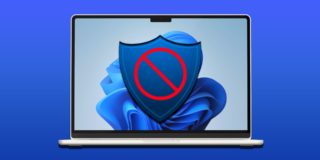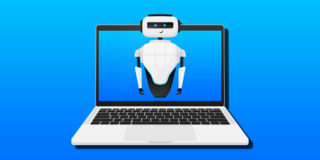How to Fix Touch Screen Issues on Samsung Galaxy J7

Touch Screen has been one of the most common issues within a smartphone nowadays. And if you think your Samsung Galaxy J7 is an exception, then your best bet is that it isn’t.
Most of the time, when we’re using our smartphones, we barely notice the time passing us by. Countless hours of playing games, texting, or watching HD videos on our Samsung Galaxy J7 are being spent by ours truly. Then one day, a heartbreaking thing suddenly occurs. As we try to unlock our device, it doesn’t respond with the touch we performed on to it. And boom! There goes our touchscreen, not working anymore, unknowingly and unexpectedly, without us knowing the reason why it occurred.
For a smartphone intended to operate most of its actions through its responsive touchscreen, it’s pretty hard to digest when our Samsung Galaxy J7 experienced some issues with it. In a user’s perspective, everything is done via screen commands, and it’s a must that every user who experiences this issue wants it to be solved ASAP. And if you’re one of the unlucky users who has encountered this issue, a question that may be running in your mind right now is that if you need to bring your Samsung Galaxy J7 to an authorized technician just to be able to get it fixed. And of course, bringing it to a service center will cost you a lot because sometimes, not all service centers offer a free check-up with your worn-out device.
We say you hold it for a second! Don’t rush, for you don’t really know yet if it’s a hardware issue, for here in Recomhub, we always say that not all hardware issue results in a faulty hardware. Sometimes, or most of the time, it’s caused out by a software issue, that you can examine and fix all by yourself!
An extra tip Recomhub can give you right now is to check for any significant patterns of these touchscreen issues. Is your Samsung Galaxy J7 brand new and recently shipped to you? Then be aware that it’s not unnatural for some device to suffer more or less visible damages when it’s being delivered, due to unexpected bumps along the road.
If your Samsung Galaxy J7’S touch screen less responsive towards the lowermost part of your screen? Then if this is the case, you might just have to relocate your common application on the top and avoid using the lower part of your screen. Then if this isn’t the case, we still have some tricks up on our sleeves for you guys.
Here’s another alternative you can perform, that you can do as a first aid for your touchscreen issue. Then after this, we promise you that we’ll show a more serious way to troubleshoot your Samsung Galaxy J7. What you need to do is pull out your SIM card.
Unexpectedly or not, a lot of Samsung Galaxy J7 owners observed that pulling out then reinserting again their SIM card somehow worked and made the display issue go bye-bye. This would imply that your Samsung Galaxy J7 was only experiencing some minor glitch. The alternative would be a temporary issue or a software bug that only Samsung can resolve with an update.
Until the fix isn’t available yet, here’s what you can do for the meantime.
Perform a Factory Reset on your Samsung Galaxy J7
Putting your phone into a factory reset gives your phone a new start, just like the first time you bought it from the store. To do this, precisely follow each step:
- Sweep your finger down the Notification shade
- Choose the Settings symbol depicted by the gear logo located at the top right corner
- Head to the User & Backup
- Choose Backup & Reset
- Hit on Factory Data Reset
- Hit on Reset Device – the option from the bottom of the display;
- Afterward, you will be redirected to a new screen, where you need to verify by choosing the Delete All option
Once you’re done with the steps, you just have to wait for the process to be finished then you can start reconfiguring your Samsung Galaxy J7 as soon as it reboots. If you have created a back up for your data before performing the factory reset, you can bring it back now.
Are you feeling that you could use more in-depth details about factory resetting? Then you can go on and proceed with this comprehensive guide on how to perform a factory reset on your Samsung Galaxy J7.
Clearing Your Samsung Galaxy J7’s Cache Out
Whenever you clear the cache of your smartphone out, glitches on your phone are being cleared out as well, that’s why it’s a great way to fix software-related issues, just like that unresponsive touchscreen of yours. To do this, perform the following steps precisely:
- Start by shutting down your Samsung Galaxy J7
- Tap then long press the Home, Volume Up, and the Power keys at the same time
- When the Android logo appears on your screen and the smartphone vibrates presently, remove the hold from the Power key
- Long press the other two keys till you enter the Recovery Mode
- Afterward, you can scroll with the Volume Down key, till you succeeded to highlight the “Wipe Cache Partition” option
- Press the Power button to initialize it
- Choose Yes
- Hit one more time on the Power button for the verification to be used into account and the wipe cache process to start
- Once done, choose the Reboot System Now option
- Lastly, press the Power button to restore and the device shall reboot with an officially cleared out system cache
Again, if you’re feeling that you could use more in-depth details about clearing the cache, then read this guide on how to clear out the cache of your Samsung Galaxy J7.
Steps in Performing a Hard Reset on your Samsung Galaxy J7
Hard reset is like performing a Factory Reset on your Samsung Galaxy J7. To do this, precisely perform each step:
- Head to the Settings app
- Choose Backup & Reset
- Follow the prompts to back up all your data
- Take some moment and read this article on how to hard reset a Samsung Galaxy J7
- With the data protected, go ahead then shut down your Samsung Galaxy J7
- Afterward, tap then long press the Power button, Home button, and the Volume Up button at the same time
- Remove the hold from them when the Samsung Logo pops up
- Head through the Recovery Mode’s menu with the Volume Down button
- Choose the Wipe Data / Factory Reset option
- Verify your selection with the Power button
- Choose Yes, then delete all user data option
- Wait for the initialization process to be completed
- Choose the Reboot System Now option
After the end of the process, the display should be responsive again just like before. Otherwise, be aware that there might be a hardware issue in the present so it’s the best that you bring it to the store where you purchased it from, so an authorized technician can check it up.
















